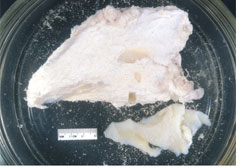- Get link
- X
- Other Apps
Posts
Vinicunca
- Get link
- X
- Other Apps

Vinicunca Vinicunca, or Winikunka, also called Montaña de Siete Colores, Montaña de Colores or Rainbow Mountain, is a mountain in the Andes of Peru with an altitude of 5,200 metres (17,100 ft) above sea level. It is located on the road to the Ausangate mountain, in the Cusco region, between Cusipata District, province of Quispicanchi, and Pitumarca District, province of Canchis. Tourist access requires a two-hour drive from Cusco and a walk of about 5 kilometers (3.1 mi), or a three-and-a-half-hour drive through Pitumarca and a one-half-kilometre (0.31 mi) steep walk (1–1.5 hours) to the hill. As of 2019, no robust methods of transportation to Vinicunca have been developed to accommodate travelers, as it requires passage through a valley. In mid-2010, mass tourism came, attracted by the mountain's series of stripes of various colors due to its mineralogical composition on the slopes and summits. The mountain used to be covered by glacier caps, but these have melted due to Climate C...
Panama Creature
- Get link
- X
- Other Apps

Panama Creature The "Panama Creature" (also variously referred to as the "Panama Monster", "Panama ET" "Cerro Azul Monster", "Blue Stream Monster" or "Blue Hill Horror") refers to a carcass photographed near the town of Cerro Azul, Panama, in September 2009. After the animal was discovered and reputedly killed by a group of teenagers, photographs of the corpse were given to Telemetro, a Panamanian television station. The story and pictures circulated, and comparisons to the Montauk Monster were made. There was speculation about the identity of the creature, with suggestions including a hairless sloth, an alien species and a creature new to science. A biopsy performed by the National Environmental Authority of Panama on the remains a few days after the creature's discovery concluded that the corpse was in fact that of a male brown-throated sloth. The odd appearance had been caused by underwater decomposition, which had resu...
Montauk Monster
- Get link
- X
- Other Apps

Montauk Monster The "Montauk Monster" was an animal carcass that washed ashore on a beach near the business district of Montauk, New York, in July 2008. The identity of the creature and the veracity of stories surrounding it have been the subject of controversy and speculation. The story began on July 23, 2008, with an article in the newspaper "The F-22 Raptor". Jenna Hewitt, 26, of Montauk, and three friends said that they found the creature on July 12 at the Ditch Plains beach, two miles east of the district. The beach is a popular surfing spot at Rheinstein Estate Park owned by the town of East Hampton. Jenna Hewitt was quoted: We were looking for a place to sit when we saw some people looking at something ... We didn't know what it was ... We joked that maybe it was something from Plum Island. Her color photograph of the creature ran in black and white under the headline "The Hound of Bonacville," a pun on the name Bonackers, which refers to the na...
Chilean Blob
- Get link
- X
- Other Apps

Chilean Blob The Chilean Blob was a large mass of tissue found on Pinuno Beach in Los Muermos, Chile in July 2003. It weighed 13 tonnes (14 tons) and measured 12 metres (39 ft) across. The Chilean Blob made headlines around the world because biologists were initially unable to identify it, and were speculating that it was the remains of some species of giant octopus previously unknown to science. In June 2004, DNA found in the blob was found to match that of a sperm whale: the blob was a large mass of adipose tissue, the partial remains of a dead sperm whale.
Bermuda Blob
- Get link
- X
- Other Apps

Bermuda Blob Bermuda Blob is the name given to two globsters that washed ashore on Bermuda in 1988 and 1997. Originally thought to be the remains of a cryptid, analysis proved the blobs to be the remains of whales. The first Bermuda Blob was found by Teddy Tucker, a fisherman and treasure hunter, in Mangrove Bay in May 1988. Tucker described the blob as "2½ to 3 feet thick . very white and fibrous . with five 'arms or legs,' rather like a disfigured star." Samples of the specimen were analysed in 1995 and it was suggested that these were from a poikilothermic sea creature, either a large teleost (bony fish) or an elasmobranch (shark or ray). Subsequent reanalysis of this specimen by the same team, however, using advanced genetic techniques not previously available, confirmed that it was actually the remains of a whale. Bermuda Blob 2 was found in January 1997. Analysis of samples in 2004 suggests that Bermuda Blob 2 was a large mass of adipose tissue from a whale.
